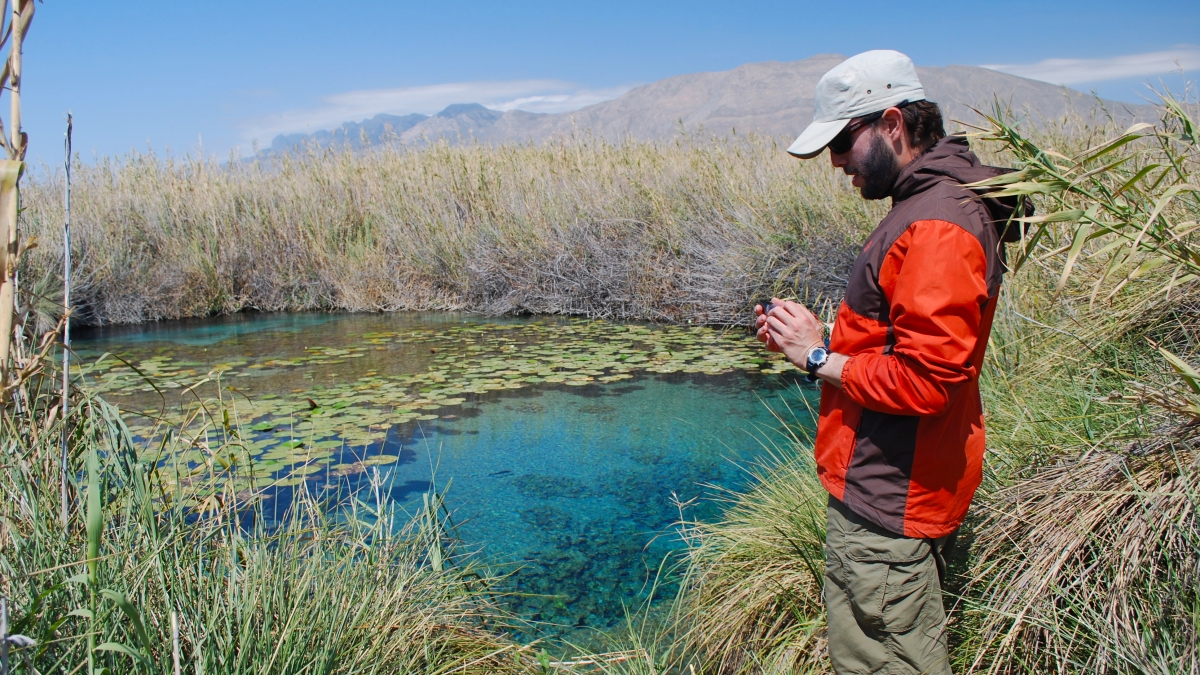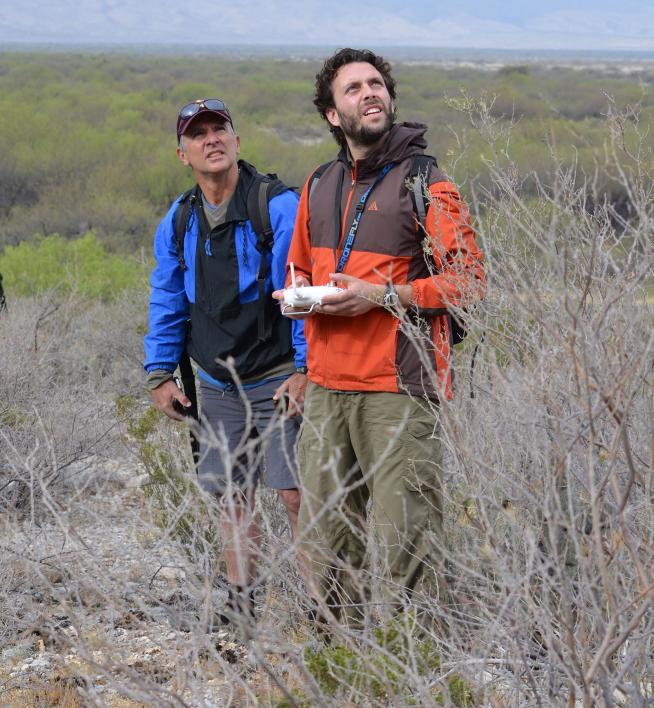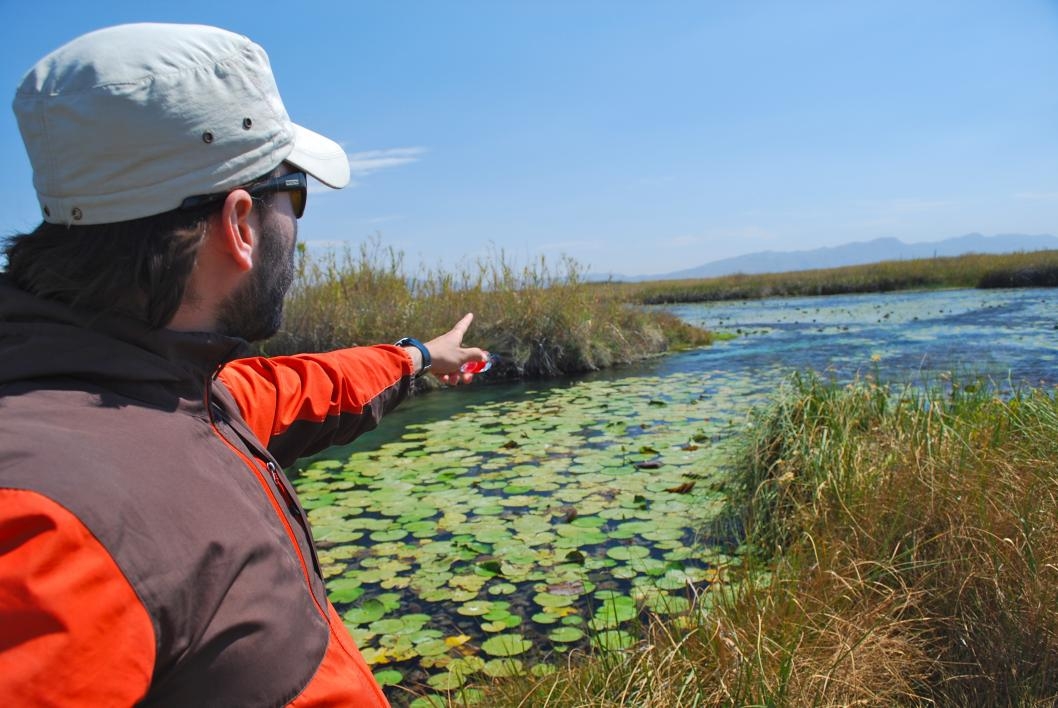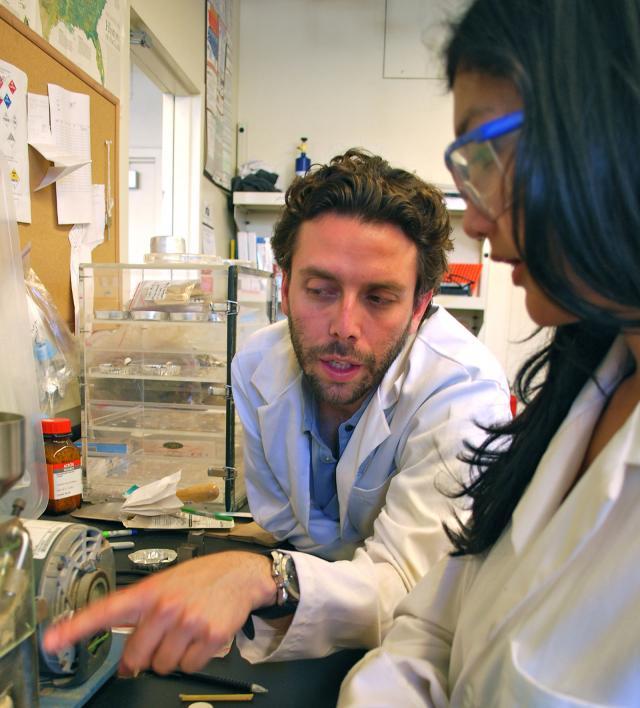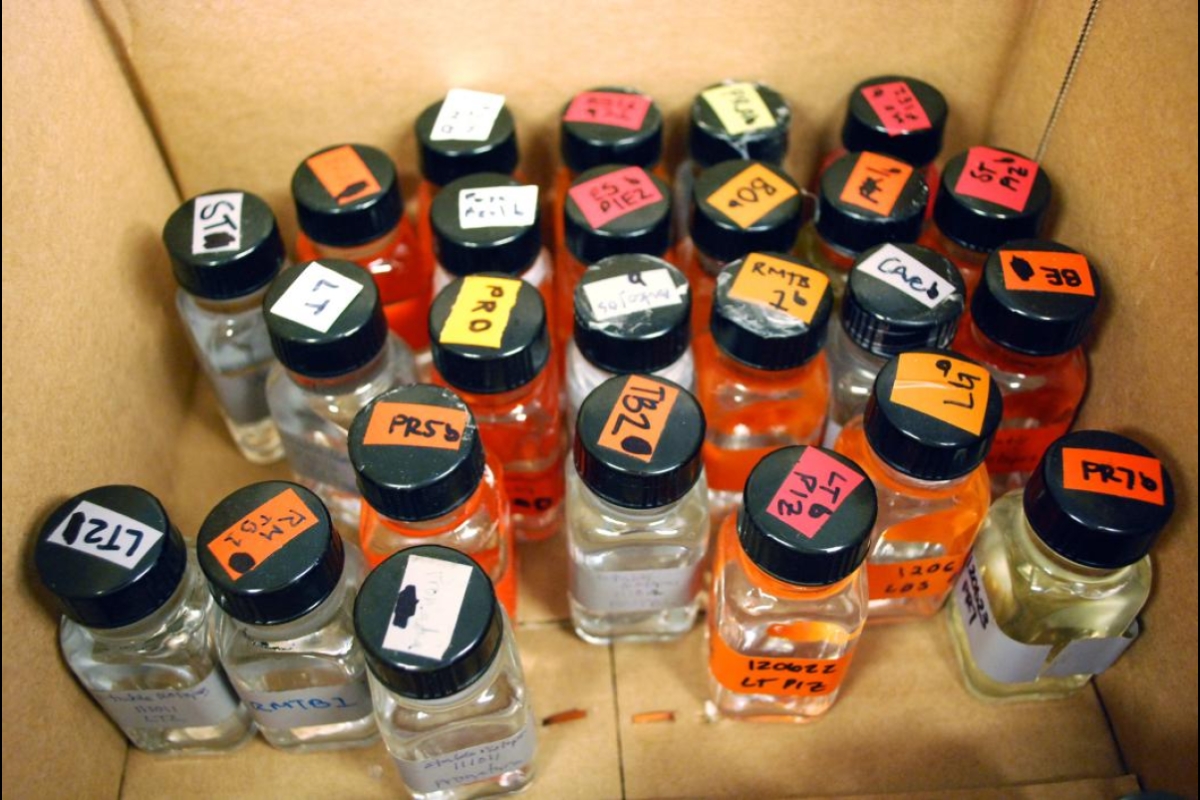When you meet Jorge Ramos, the first things you’ll notice are his easy smile and genuine interest in others. Give it a few minutes, and you’ll be captivated by his enthusiasm for science and entertained by his quick wit.
Those qualities are particularly helpful when you’re a graduate student conducting research in a foreign land.
Though born in the western part of Texas, Ramos grew up in the dry deserts surrounding Ciudad Juarez, Mexico, and developed an early appreciation for water. That, along with his parents’ penchant for giving him books about nature, planted the seed that over time, grew into a deep love of nature and all its mysteries.
Ramos, a fifth-year doctoral student in Arizona State University’s Environmental Life Science Program, is studying the ecology of wetland ecosystems — a pursuit that soon after landing him at ASU has since taken him to places around the world. For his dissertation, he is studying the ecology of constructed wetlands in Arizona, but is also part of a research team studying aquatic ecosystems in Cuatro Ciénegas, Mexico — a complex, somewhat mysterious network of pools and streams considered by some to be a possible birthplace of life on Earth.
“When I got to ASU, I heard that a group of faculty and students come down to Cuatro Ciénegas every once in a while to study deserts and water, and that’s what I’m interested in. All of a sudden, only four months after coming here, I was on a plane to Cuatro Ciénegas and it blew my mind. It’s a desert with incredible hydrology, incredible surface water and incredible species, and it just added another perspective to what I was interested in investigating,” Ramos said.
The next generation
As an ecologist, Ramos is one of at least four generations of ASU scientists who has traveled to this remote desert to study the spring water and all that thrives in it. On this trip, he gathered more water samples from several springs for a study that he and fellow grad student Jessica Corman started back in 2011, but he primarily joined this trek to help professor James Elser, as he and a team of undergraduate honors students filmed a documentary about the importance of this now-protected land.
“He’s got expertise in hydrology and wetlands ecology, and that’s a lot of what’s going on here, so we needed that help,” said Elser, a professor of limnology with ASU’s School of Life Sciences. “He’s also been working with my grad student Jessica Corman who did her dissertation research down here, so they are a good team, it seems.”
Ramos and Corman have sampled more than 18 spring-fed ecosystems throughout the Cuatro Ciénegas basin. This rare oasis, located in the Chihuahuan Desert in the state of Coahila, Mexico, hosts many unique organisms and more than 70 endemic aquatic species. Although the Mexican government has formally designated 528 square miles of the basin as a preserve, it stopped short of preventing locals from using the water for crop irrigation and dairy farming. Some of the pools have dried up.
“We’re starting to see patterns on how different Cuatro ecosystems respond to different courses or pressures such as human alterations or climate change,” Ramos said. “We’re also looking at how the water is affected by either natural events such as hurricanes, or even just how they’re connected to each other because these are not just surface waters. We’re starting to realize some of them are connected underground and some of them are not.”
Ramos is committed to the research here and enjoys the complexity of the international aspects. He frequently serves as an interpreter or helps to make lasting connections with local landowners, non-profit organizations and government officials who must provide the researchers access to the protected pools or “pozas” — something that’s not always easily obtained.

ASU researchers, including Jorge Ramos (top), a fifth-year doctoral candidate with the School of Life Sciences, have collected dozens of water samples from the Cuatro Ciénegas springs.
Photos by Sandra Leander
“I fell in love with these places and got to connect with the people who own them, care for them and protect them,” Ramos said. “I mean you look at the pozas, how crazy and beautiful they are, and you look at the outside and it’s dry and it’s desert and it’s gray. But when you look at these, it just screams life.
“It screams come study me and I’m like, ‘Of course, I’ll study you. Why not? I’ll go and dive in and sample you.’ Then, because we had to study many of them, not just one or two, I needed to communicate with the community to ask permission from all the landowners,” he said.
Over the years, teams of researchers from ASU have also worked closely with many Mexican counterparts including professor Valeria Souza, a microbiologist from Universidad Nacional Autónoma de Mexico. Souza said it’s exciting to be part of an international team.
“I think the Arizona team is fantastic because they’re very deep in each of the points they bring to the puzzle," Souza said. “And the Mexican team has been collaborating in ways that encase what the Arizona team is doing.”
A new perspective
On this trip, Ramos also learns a new technology — piloting a quad-copter to film the area for the documentary, as well as to observe the springs from above. This is just the kind of “out-of-the-box” project that may benefit their understanding of the area.
Ramos studies the previously unseen perspective during playback on his computer: “I think this new technology is going to be crucial to understanding landscapes like this because we’re used to seeing them at an eye level. With our eyes, we look at this and see one pond.
“If we look at them from above, not the satellite level, that’s what we currently use, but let’s say 500 meters from here, we will clearly be able to see how connected they are. That’s crucial for surface hydrology knowledge,” he said. “Of course, the movie part is also pretty exciting too, because I’ve been able to go to places that I had not been during my other trips down here.”
In the near future, Ramos and Corman expect to publish their findings — based on four years of collecting extensive data. After that, he hopes to follow in the footsteps of his many mentors.
“I think at ASU, I work with at least seven professors really closely. They’ve all taught me something different. They’ve all showed me how they manage their labs,” he said. “I think I would like to have a space where I can invite undergrads or grad students to a place where they can ask their questions and study places like this where there are still discoveries to be made.”
Given the discoveries they are making at places as unique as Cuatro Ciénegas, and about challenges as great as climate change, Ramos said he believes it’s an exciting time to be an ecologist, and he hopes to be supporting the next generation of ecologists as they find their passion as researchers.
Read more
Discover more about ASU's history and future in Cuatro Ciénegas here: Threatened oasis beckons ASU researchers.
This story appears in the latest issue of SOLS Magazine.
More Local, national and global affairs

How ASU research is helping first responders
Arizona State University’s faculty members are studying how to improve the jobs, health and well-being of first responders, and also applying their research through direct training to help these…
ASU honors Sun Devils, local organizations with Social Work Month Awards
Arizona State University’s School of Social Work recently honored a total of 29 students, faculty, staff, alumni and local community organizations with its annual Social Work Month Awards.The…

ASU's USAID projects provided economic benefits to US
For more than a decade, Arizona State University has helped people around the world — and advanced interests in the United States at the same time — through its collaborative projects with the U.S.…


